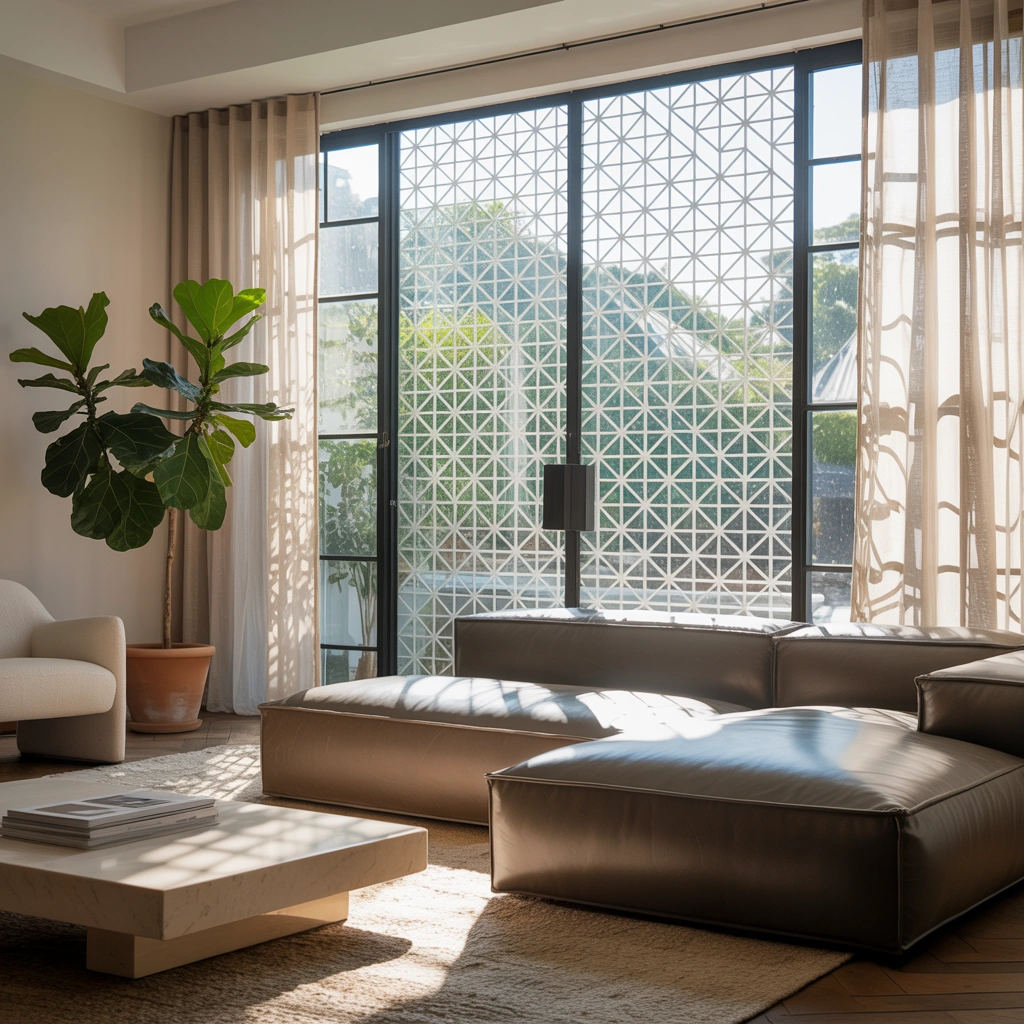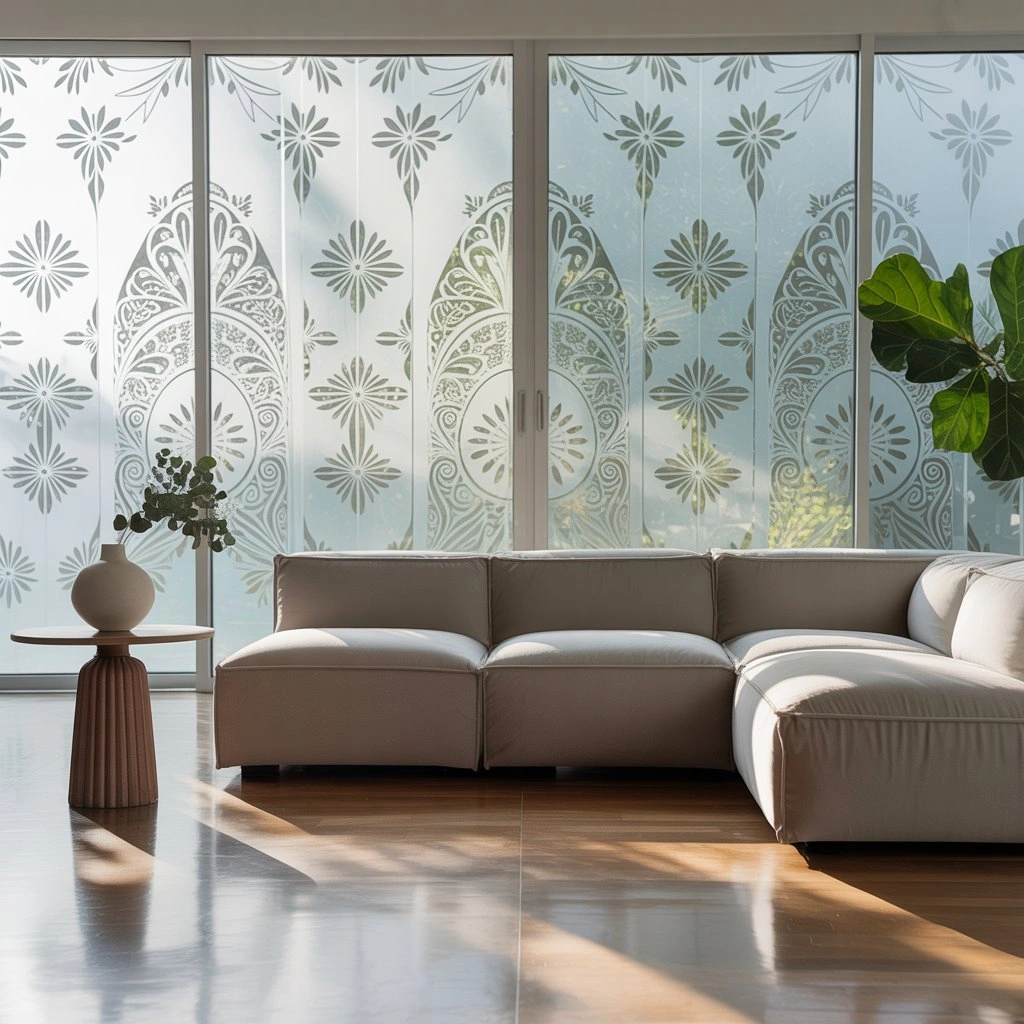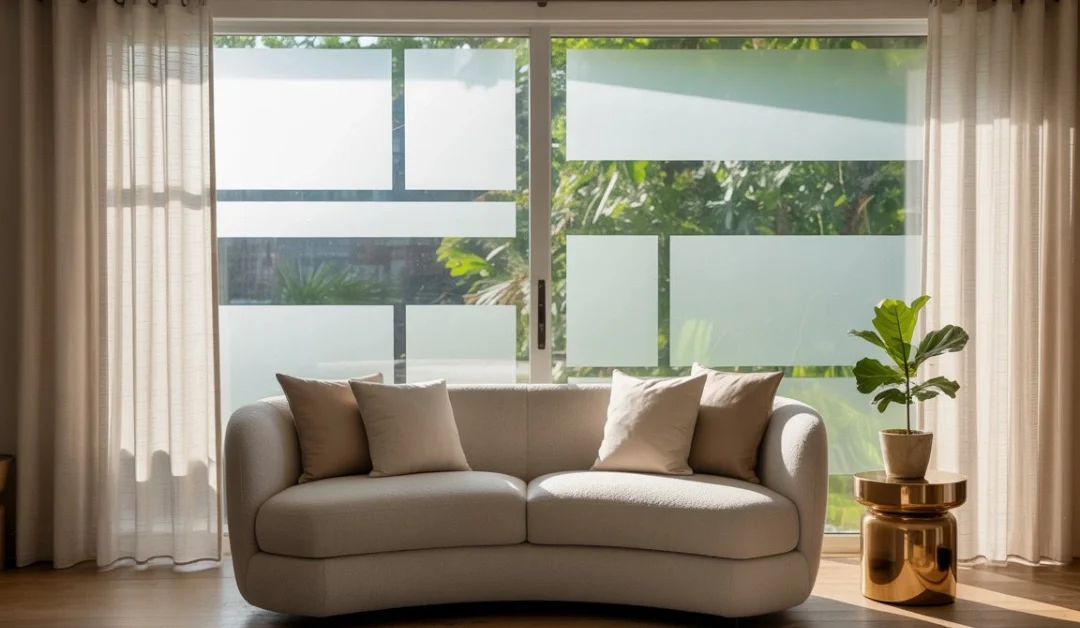Window films are thin layers added to glass windows. They are loved for solving many problems, such as excessive sunlight, lack of privacy, and high energy bills. They are easy to install and can make homes more comfortable and stylish.
For homeowners looking for simple yet effective upgrades, window films are a top choice. They protect furniture, reduce glare, and even lower energy costs. Whether you live in a sunny area or want more privacy, window films can be a smart investment.
1. What Exactly Are Window Films and How Do They Work?

Window films are made of materials like polyester or vinyl. They are stuck to the inside of windows. Some films block sunlight, some make windows look frosted, and others keep heat out. They work by reflecting or absorbing sunlight, reducing glare, and stopping UV rays from entering.
How Are Window Films Installed?
Window films are applied directly to the glass surface. The process is simple:
- Clean the window thoroughly.
- Spray a solution of water and mild soap onto the glass.
- Carefully place the film on the window.
- Use a squeegee to remove bubbles and excess water.
This process takes only a few minutes per window and can be done as a DIY project. For best results, it is recommended to hire a professional installer, especially for large or complex windows.
2. Do Window Films Provide UV Protection for Home Interiors?
Yes! UV rays from the sun can fade furniture, carpets, and artwork. Window films with UV protection stop up to 99% of these harmful rays. This helps keep your home’s colors bright and your family safer from sun damage.
How Does UV Protection Work?
Window films contain special coatings that absorb or reflect UV light. These coatings are invisible to the eye but highly effective. For example, homes with wooden floors or leather furniture can benefit greatly from UV-blocking films. Without them, sunlight can cause irreversible fading and damage over time.
Real-World Benefits of UV Protection
- Preserve Furniture: Carpets, curtains, and sofas stay vibrant longer.
- Protect Artwork: Paintings and photographs are shielded from sun damage.
- Healthier Living: Reduced UV exposure lowers skin damage risks.
3. Can Window Tinting Offer Privacy Without Compromising Style?
Yes! Frosted or tinted window films let light in but block the view from outside. They come in many designs, like stripes or patterns, so you can choose one that matches your home’s style.
Types of Privacy Window Films
- Frosted Films: Create a translucent effect, ideal for bathrooms or office partitions.
- Tinted Films: Darken the glass slightly while maintaining visibility.
- Decorative Films: Feature patterns like leaves, flowers, or geometric shapes.
Why Choose Privacy Films Over Curtains or Blinds?
- Low Maintenance: No need to open or close them daily.
- Natural Light: Allow sunlight in without exposing your home to prying eyes.
- Cost-Effective: Cheaper than replacing windows or installing heavy drapes.
For more ideas on window decor, check out roller blinds vs. Venetian vs. vertical blinds.
4. Do Window Films Help in Saving Energy and Reducing Utility Bills?
Yes! Energy-saving films reflect heat in summer and keep warmth inside during winter. This means your air conditioner and heater don’t have to work as hard, which lowers your energy bills.
How Do Energy-Saving Films Work?
These films have metallic or ceramic layers that reflect infrared radiation. In summer, they bounce heat away from the home. In winter, they trap warmth inside. This dual action reduces the need for artificial heating and cooling.
Energy Savings by Season
- Summer: Up to 30% reduction in cooling costs.
- Winter: Up to 15% savings on heating bills.
Environmental Benefits
By reducing energy use, window films lower carbon emissions. This makes them an eco-friendly choice for environmentally conscious homeowners.
5. Are There Decorative Window Films for Aesthetic Purposes?

Yes! These films add style to windows with patterns or colors. They are perfect for bathrooms or kitchen cabinets.
Popular Decorative Film Designs
- Geometric Patterns: Modern and bold.
- Nature-Inspired Motifs: Leaves, trees, or floral prints.
- Frosted Textures: Mimic etched glass for a luxurious look.
For more decor ideas, read grass cloth wallpaper vs. peel-stick wallpaper.
Do Solar Control Films Effectively Reduce Heat Inside Homes?
Yes! These films block the sun’s heat, keeping rooms cooler.
How Solar Control Films Work
They use reflective coatings to bounce sunlight away from the home. Some films are dyed to absorb heat before it enters the room.
Best Rooms for Solar Control Films
- South-facing windows (receive the most sunlight).
- Rooms with electronics (TVs, computers) are prone to overheating.
Are Safety and Security Window Films Suitable for Home Use?
Yes! They make windows harder to break, adding safety.
How Safety Films Protect Homes
If glass breaks, the film holds shards together, reducing injury risk. They are often used in doors, ground-floor windows, and patio areas.
Are Frost or Privacy Films a Good Option for Glass Windows?
Yes! They give a frosted look for privacy.
Where to Use Frost Films
- Bathrooms and bedrooms.
- Office partitions or hallway doors.
Are There Clear Window Films That Block UV Rays Completely?
Yes! These films are invisible but still block UV rays.
Benefits of Clear UV Films
- Protect interiors without altering window appearance.
- Ideal for homes with large windows or skylights.
6. What Are the Most Common Questions About Residential Window Films?
Yes! Many block 99% of UV rays.
Yes! DIY kits are easy to find.
DIY Installation Tips
Use a squeegee to remove bubbles.
Apply on a cloudy day to avoid rapid drying.
Up to 10–15 years, if cared for properly.
Factors Affecting Lifespan
Quality of the film.
Exposure to direct sunlight.
Proper installation.
Yes! They are cheaper than replacing windows.
Cost Comparison
Window Replacement: $300–$1,000 per window.
Window Films: $5–$50 per square foot.
Yes! They make screens and TVs easier to see.
Glare Reduction in Different Rooms
Living Rooms: Reduce glare on TV screens.
Home Offices: Prevent computer screen reflections.
No! Light can still come through.
Light Transmission Levels
Clear films: 80–90% light transmission.
Tinted films: 30–70% light transmission (adjustable).
Yes! By blocking UV rays.
UV light breaks down chemical bonds in dyes and pigments. Window films act as a barrier, preserving colors.

